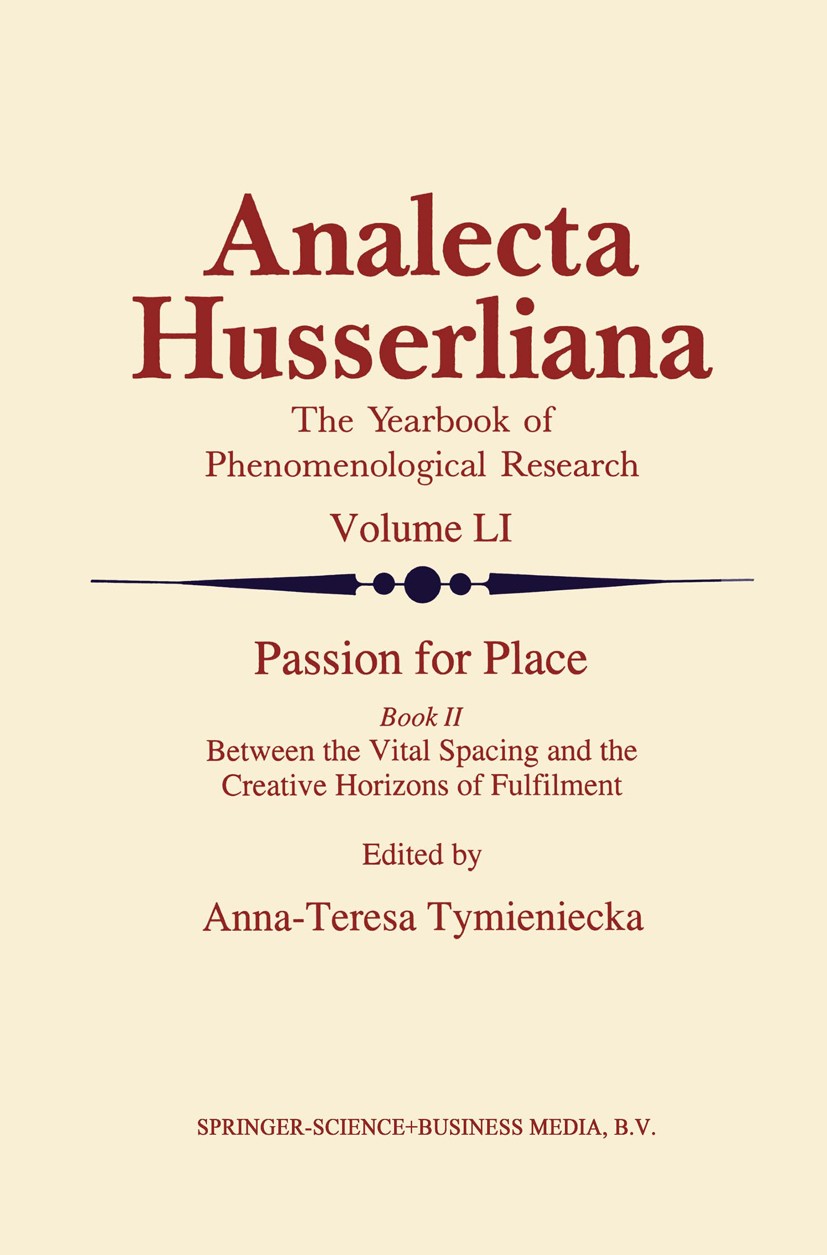| 书目名称 | Passion for Place Book II | | 副标题 | Between the Vital Sp | | 编辑 | Anna-Teresa Tymieniecka | | 视频video | http://file.papertrans.cn/742/741903/741903.mp4 | | 丛书名称 | Analecta Husserliana | | 图书封面 |  | | 描述 | Among the multiple, subliminal passions that inspire our lifein innumerable ways, literature shows us one that seems to play aparticularly penetrating role in human concerns. This passion, whichTymieniecka calls an `esoteric passion‘, finds its projection andcrystallization in space: it is .the esoteric passion for space...This subliminal passion, investigated through literature, allows thephilosopher to reach beneath the fallacious separations of nature,humanness and the cultural world, restoring the wholeness ofexperience that has become lost in the artificial one-sidedness ofcontemporary approaches, confined to language as they are. .The elemental passion for place is investigated here in the literaryfruits of creative imagination. Unravelled from the very depths of theprimogenital, onto-poietic unfolding of life, the passion for place isrevealed as projecting into the flux of life: it is a `station‘ oflife-significance. .This collection presents papers from two conferences of theInternational Society of Phenomenology and Literature held inCambridge, MA in 1993/4. | | 出版日期 | Book 1997 | | 关键词 | Enzo Paci; Martin Heidegger; identity; phenomenology | | 版次 | 1 | | doi | https://doi.org/10.1007/978-94-017-2549-1 | | isbn_softcover | 978-90-481-4728-1 | | isbn_ebook | 978-94-017-2549-1Series ISSN 0167-7276 Series E-ISSN 2542-8330 | | issn_series | 0167-7276 | | copyright | Springer Science+Business Media Dordrecht 1997 |
The information of publication is updating

|
|
 |Archiver|手机版|小黑屋|
派博传思国际
( 京公网安备110108008328)
GMT+8, 2025-11-22 22:38
|Archiver|手机版|小黑屋|
派博传思国际
( 京公网安备110108008328)
GMT+8, 2025-11-22 22:38


